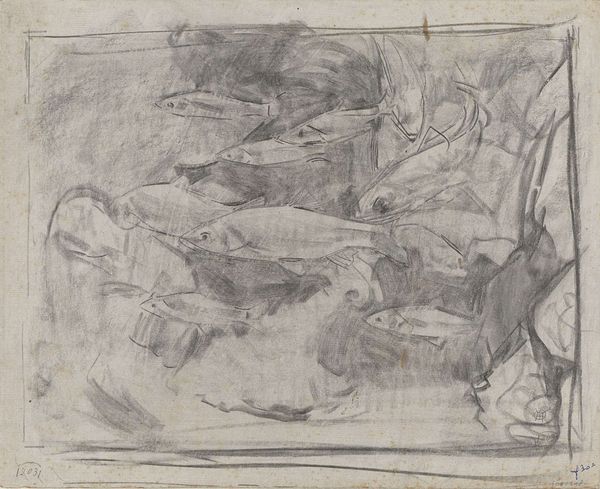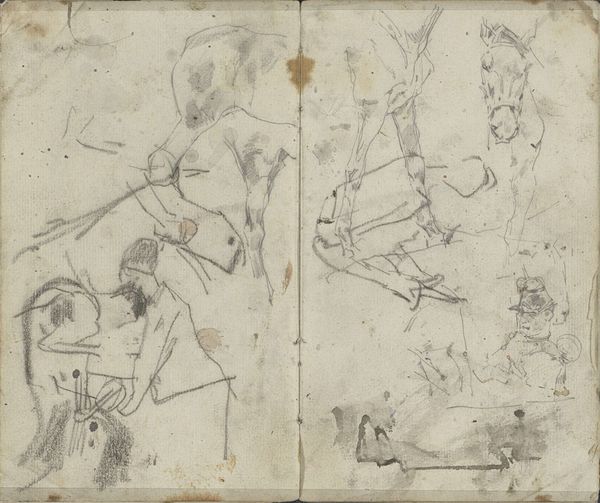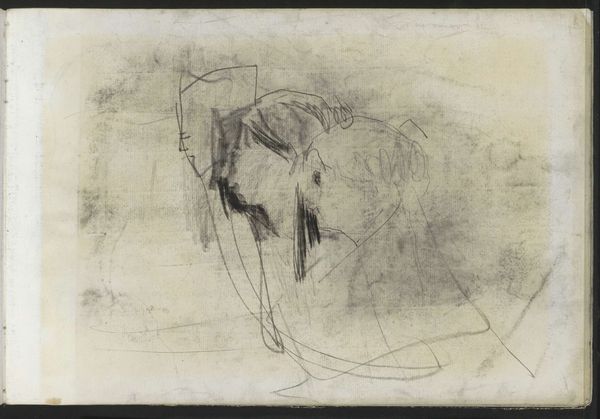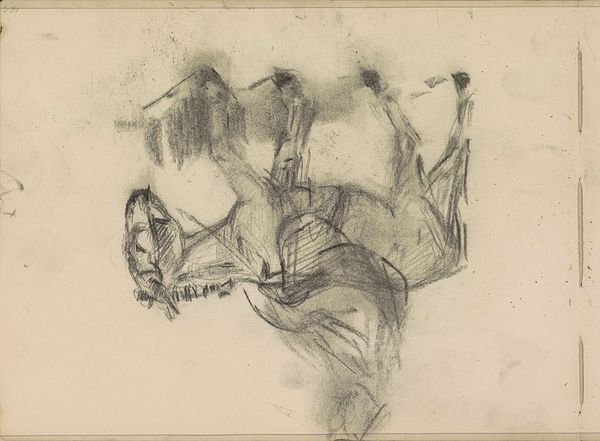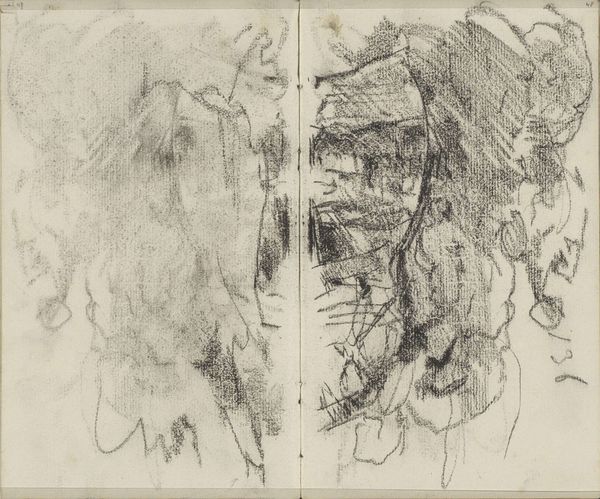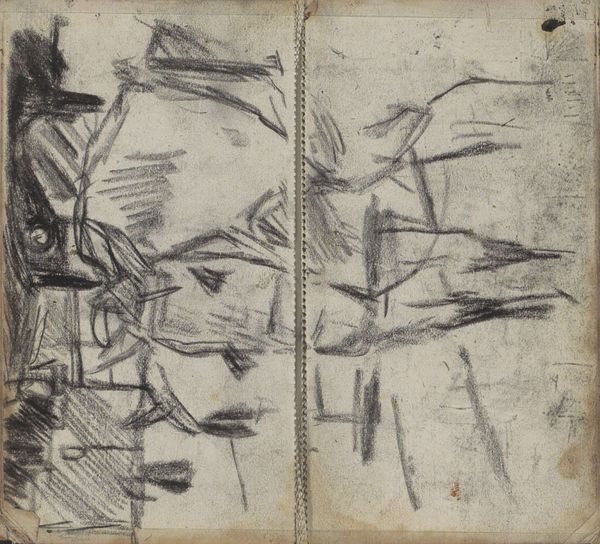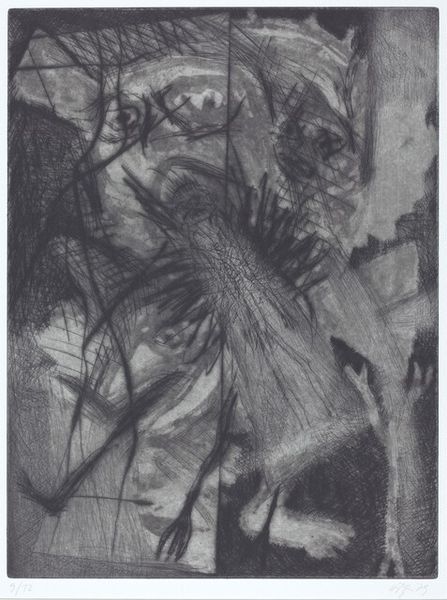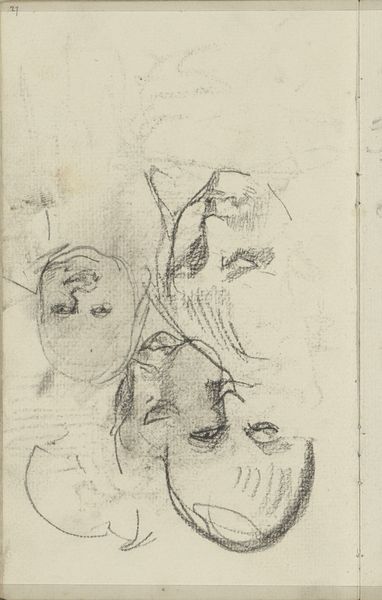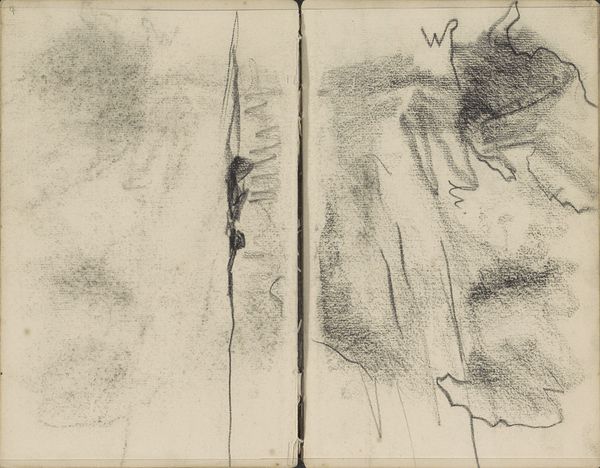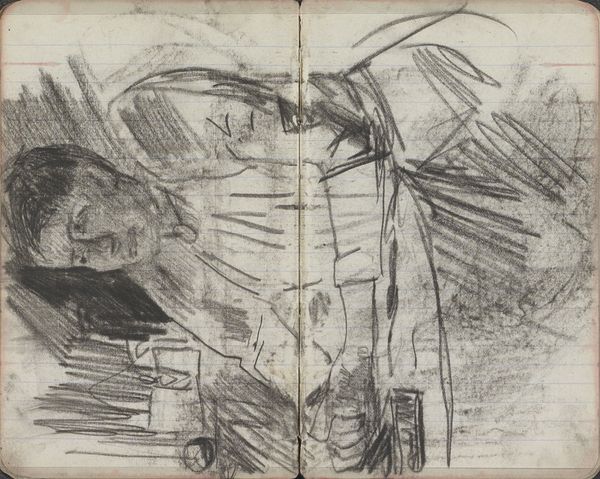
Drinkende man in zeventiende-eeuwse kleding en een zittende man Possibly 1881 - 1885
0:00
0:00
georgehendrikbreitner
Rijksmuseum
drawing, paper, pencil, charcoal
#
portrait
#
drawing
#
amateur sketch
#
toned paper
#
light pencil work
#
quirky sketch
#
impressionism
#
pencil sketch
#
incomplete sketchy
#
figuration
#
paper
#
personal sketchbook
#
detailed observational sketch
#
pencil
#
sketchbook drawing
#
charcoal
#
sketchbook art
Copyright: Rijks Museum: Open Domain
George Hendrik Breitner sketched these figures in charcoal and ink. The figure on the right evokes a sense of melancholy, a motif traceable back to ancient depictions of grief and introspection. Think of the classical philosophers, often portrayed in contemplative poses, heads bowed, embodying the weight of thought. This posture, laden with sorrow, finds echoes across centuries, from medieval religious art depicting mourning figures to Renaissance portrayals of pensive scholars. The bowed head isn’t merely a physical gesture; it's a visual shorthand for inner turmoil, a universal symbol recognized across cultures and epochs. Consider how such gestures tap into our collective memory, stirring emotions buried deep within the subconscious. The artist uses this to evoke the profound and universal experience of human suffering. These resurface, evolve, and take on new meanings in different historical contexts, reflecting the cyclical nature of human experience.
Comments
No comments
Be the first to comment and join the conversation on the ultimate creative platform.

